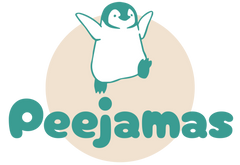If you have done much international travel or have acquaintances from different countries, you know that we all have our own take on familiar practices. You might reprimand your child for slurping their cereal too loudly, but in Japan, it’s considered totally acceptable—even favorable—to slurp up your noodles as a sign that you enjoy them. Your kids may tuck their teeth under the pillow for the Tooth Fairy to take in exchange for money, but kids in Greece throw them up on the roof for a magical pig to retrieve.
Different traditions resonate in different places, depending on their culture, history, and geography. In this blog, we’ll explore how potty training practices vary from country to country. Some of these ideas may make you glad that you live where you do, but you might find others to be worth emulating.

Germany
When East Germany was under Soviet control during the Cold War, kids were taught to potty train en masse at state-run schools. They would sit on a “potty bench”—one long platform with several holes—until everyone had done their business.
Nowadays, kids use a potty chair (töpfchen) that can stand alone or clip to a toilet seat. Kids can start kindergarten as early as age 3 in Germany, so many parents potty train their children before their third birthday. In addition, boys are taught to sit down on the toilet rather than stand and aim. And finally, most Germans are less skittish about nudity and have no qualms with seeing a little one running around diaper-less outside as they master the art of potty training.
Indonesia
If you discuss potty training with someone living in rural Indonesia, they may not know what you are talking about. While we teach our kids to make a distinct pivot from diapers to underwear, some Indonesians discourage the use of diapers early on. Kids standing in a ditch or rice field can simply go where they stand. In time, they learn to look for sanctioned holes in the ground or toilets. Since disposable diapers and washing machines (for soiled cloth diapers) aren’t available in poor parts of Indonesia, this practice makes sense. And it tends to get kids potty trained quicker since they’re conscious of what’s coming out of their body instead of just having it be absorbed by diapers.
China
Toilet training practices in rural China are similar to those in Indonesia, though Chinese children are dressed in “split pants,” which feature an opening along the crotch seam. These traditional pants allow children to stay dressed without soiling their clothes when they need to relieve themselves. Most Chinese children are trained by age 2.
Ivory Coast
Mothers here begin toilet training their kids a few days after birth, administering enemas twice daily to keep kids from pooping at inopportune times. Why? In a country where disposable diapers are largely unavailable and babies are carried on backs, potty training is a big deal. After all, no one wants a child’s fecal matter dripping down their back if they can help it.
Sweden
Sweden offers public, tax-subsidized daycare, and most parents start taking advantage of this when their child is about one year old. This means that many kids are potty training with their peers as part of their childcare experience. Daycares provide easy-to-access potty chairs that the kids can use throughout the day with sticker charts for rewarding progress (nothing like a little peer-to-peer competition to move things along). Of course, this has to be a joint effort with Swedish parents so that they can reinforce good toilet training practices at home.
Bolivia
As one of the poorest countries in South America, indoor plumbing is not widely available here. Mothers learn to watch their children for signs that they are ready to urinate, then whisk them outside to relieve themselves in designated places. They may use diapers at night and skip them altogether in the day.
Vietnam
Mothers here use sound to potty train their children. They watch their babies closely from infancy to detect signs that they need to go to the bathroom, then hold them over the potty and whistle as they relieve themselves. By around nine months, the moms initiate the whistling sound at opportune times to encourage their child to pee or poop. They continue this practice until the child no longer needs a reminder to use the bathroom.
Meanwhile, back at the ranch…
Now that we’ve finished our world tour, let’s take a look at U.S. potty training practices. A review published in Jornal de Pediatra drew on 85 U.S. toilet training studies to show a significant increase in the average potty training age in America. In 1947, 60% of kids were toilet trained at 18 months. Today, the average toilet training age is roughly 36 months.
In general, doctors say not to rush it because every child’s physiological and cognitive development is different. And thankfully, we have some great resources to help the process along. These include fancy potty chairs that can clip onto the toilet or ride along in the car for potty training on the go. For night time training, there are sophisticated bedwetting alarms as well as products like Peejamas. These comfy pajamas serve as eco-friendly alternatives to diapers, absorbing moisture to eliminate mess but still leaving a wet sensation so kids can wake up and go potty.



